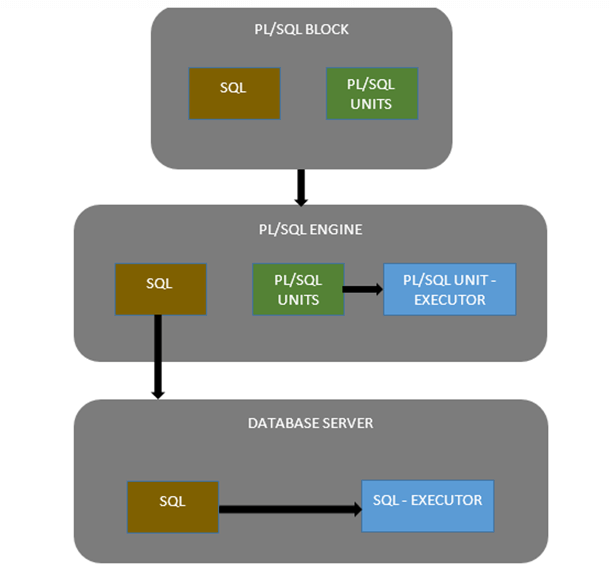What is PL/SQL?
PL/SQL is an extension of Structured Query Language (SQL) that is used in Oracle. Unlike SQL, PL/SQL allows the programmer to write code in a procedural format. Full form of PL/SQL is "Procedural Language extensions to SQL".
It combines the data manipulation power of SQL with the processing power of procedural language to create super powerful SQL queries.
PL/SQL means instructing the compiler 'what to do' through SQL and 'how to do' through its procedural way.
Similar to other database languages, it gives more control to the programmers by the use of loops, conditions and object-oriented concepts.
In this tutorial, you will learn-
Architecture of PL/SQL
The PL/SQL architecture mainly consists of following three components:
- PL/SQL block
- PL/SQL Engine
- Database Server
PL/SQL block:
- This is the component which has the actual PL/SQL code.
- This consists of different sections to divide the code logically (declarative section for declaring purpose, execution section for processing statements, exception handling section for handling errors)
- It also contains the SQL instruction that used to interact with the database server.
- All the PL/SQL units are treated as PL/SQL blocks, and this is the starting stage of the architecture which serves as the primary input.
- Following are the different type of PL/SQL units.
- Anonymous Block
- Function
- Library
- Procedure
- Package Body
- Package Specification
- Trigger
- Type
- Type Body
PL/SQL Engine
- PL/SQL engine is the component where the actual processing of the codes takes place.
- PL/SQL engine separates PL/SQL units and SQL part in the input (as shown in the image below).
- The separated PL/SQL units will be handled by the PL/SQL engine itself.
- The SQL part will be sent to database server where the actual interaction with database takes place.
- It can be installed in both database server and in the application server.
Database Server:
- This is the most important component of Pl/SQL unit which stores the data.
- The PL/SQL engine uses the SQL from PL/SQL units to interact with the database server.
- It consists of SQL executor which parses the input SQL statements and execute the same.
Below is the pictorial representation of Architecture of PL/SQL.PL/SQL Architecture Diagram Advantage of Using PL/SQL
- Better performance, as SQL is executed in bulk rather than a single statement
- High Productivity
- Tight integration with SQL
- Full Portability
- Tight Security
- Support Object Oriented Programming concepts.







0 Comments
Thanks for comment.